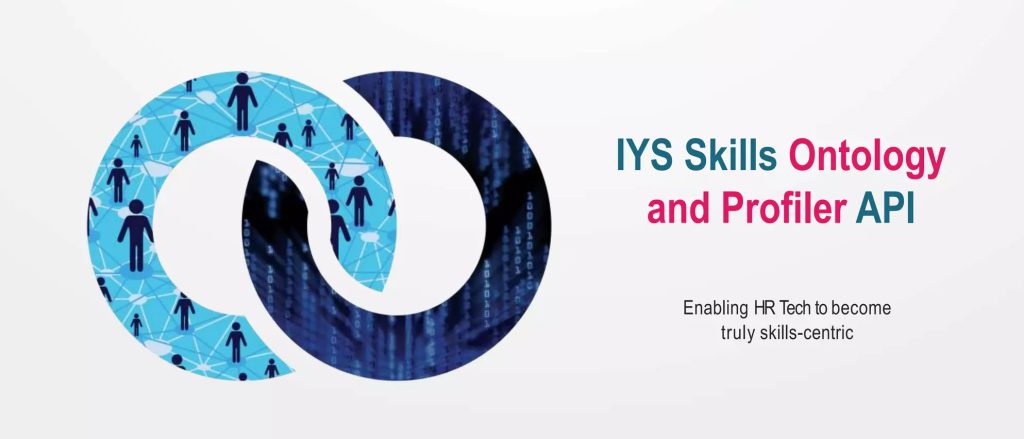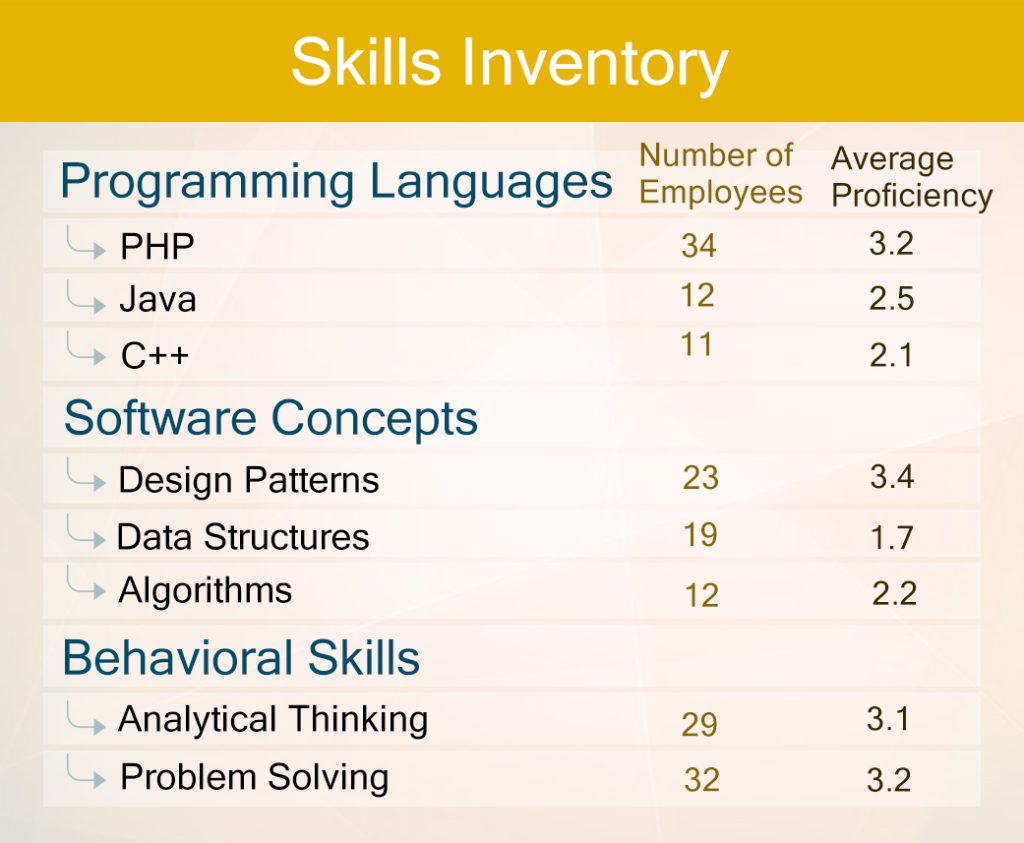We have created an entirely new language for skills and then gone on to build multiple ways to align it effectively to existing HR processes. Many of you might be curious about how this really functions. In this article we will give you a quick lowdown on how the IYS Skills Ontology can be used to map the skills of individuals to jobs.
So what does the Skills Ontology contain, and how is it structured?
- At the core is data on Skills – this includes any and all conceivable type of skills (Technical, Functional, Behavioral, Domain Experience, Knowledge, Certifications, and Roles / Activities)
- These Skills are brought together into logical groups
- These Skills Groups are in turn associated with one or more Skills Categories
- Semantics-related issues including Acronyms, Synonyms are ironed out
- Proficiency Levels (Legends) are tailored to the specific Skills Category
- And, most importantly, the Skills are constantly updated
There are multiple options available for this powerful skills resource.
- API on Skills, with no associations or contexts – Skills are prompted / auto-completed from the IYS Skills Ontology server.
- API on Skills, with associations – Apart from auto-completion, skills related to selected skills are also shown to the users.
- Web Plugin for Skills – With search, associations, comments and proficiency ratings
Key Highlights of the Skills Ontology and Profiler
Holistic Skills Profiles
The focus is on a holistic Skills Profile, and not just on the list of skills that an individual may possess. Adding skills randomly, as is normally done, provides little insight to one’s profile.
A Skills Profile, on the other hand, is a structured format for capturing the various aspects of one’s skills based on one’s function. For a Skills Profile, individuals are prompted to add skills in different areas such as technical skills, domain experience, role/ activities, behavioral skills, certification, knowledge and so on. Each function would assign different importance to skills in each of these areas.
Relationships between categories of skills
The Skills Ontology establishes relationships between different categories of skills. For example, in the case of Accounts & Finance, the category of Types of Risks (Tax Risk, Compliance Risk, Governance Risk and so on) is associated with a person performing the Financial Control function. The same category of Types of Risks is also linked in Banking with a person playing the Governance and Risk Management function. Such association of skills has a profound impact on the talent landscape.
Standardised Acronyms
Phrases related to skills, where required, can also have acronyms, so that users may use either the full phrase or the acronym, and these selections can still be correlated.
For example, Cisco Certified Network Associate (CCNA) may be selected by a user either in the form of Cisco Certified Network Associate or CCNA, and still be correlated to the same skill phrase.
Normalization of Aliases
Many times, different people refer to the same thing in different ways, or by using different words and phrases.
For example Digital Marketing, Online Marketing, Internet Marketing or Web Marketing all refer to the same thing. In the case of the IYS Skills Ontology, these are matched or normalized at the backend, so irrespective of which of these phrases one uses, they can be matched correctly.
Tracking Proficiency Levels
Two approaches have been taken towards capturing proficiency levels. The first is to normalize the scale and the second is to use customized scales for different skills. In order to perform analysis on skills – such as matching the skills of a person to those of a job, or to identify gaps in skills – two or three kinds of scales are used. Where there is a graded nature of proficiency level, a four scale rating is used, and Yes / No rating is used for cases where such a selection is relevant.
The more important exercise is customizing the rating scale based on the skills category in question. In the cases of, say, a person’s proficiency level in programming, proficiency in using a particular tool (say, Laboratory Information System), familiarity with standards (say, ISO), knowledge level (say, of Earthquake Resistant Structures), there is a need for different kinds of rating scales to help understand the respective proficiency levels in these different skills categories.
In the IYS Skills Ontology, the legends for the various types of skills are customized or tailored to the skills category.
User contribution and Governance
IYS fully appreciates that it cannot have a complete, correct and current Skills Ontology all on its own. It banks on users to contribute to the Skills Ontology. Users can suggest new skills to be added, which are then vetted and added to the Ontology after classification. This way the Skills Ontology grows meaningfully to the benefit of one and all.
Behavioral Skills
IYS has taken a unique approach to profiling the soft side of skills. Emphasis is placed on two key aspects – first, Role and attributes related to the role, and second, attitude.
After considerable research, the structure arrived at is to use clusters of roles, which in turn depend on certain attributes. The essence of this approach is that everyone naturally has certain attributes and these are suited to certain roles. Honing these attributes help us become more effective at playing these roles. More importantly, roles are perennial while technologies and functions change with time. Thus there is an attempt to give emphasis to honing one’s attributes.
Similarly attitudes, though underplayed, normally have a significant impact on our performance. There are two dimensions to this – in some cases, the absence of, or a weakness in, a certain attitude can be a disabler to performance, whereas on the other hand an outstanding strength in certain attitudes enable performance.
Common format for Jobs and People
The Skills Profiler is similar for both jobs and people. While in some cases there is a difference in terminologies used, all other aspects are the same.
This has a very profound impact on talent acquisition and management, since this common structure helps to create simple, precise skills data which then becomes useful for analytics.
How to use the Skills Ontology and Profiler
It’s Your Skills tracks the API calls i.e. the skills that are called by the users. Pricing is based on the number of API calls consumed by the customer. APIs can be called through an API key generated for the specific domain of the customer.
Contact our team for a demo on the Skills Ontology to learn how it can be applied to your need.





